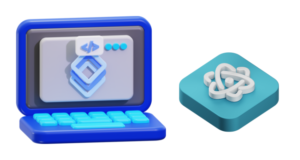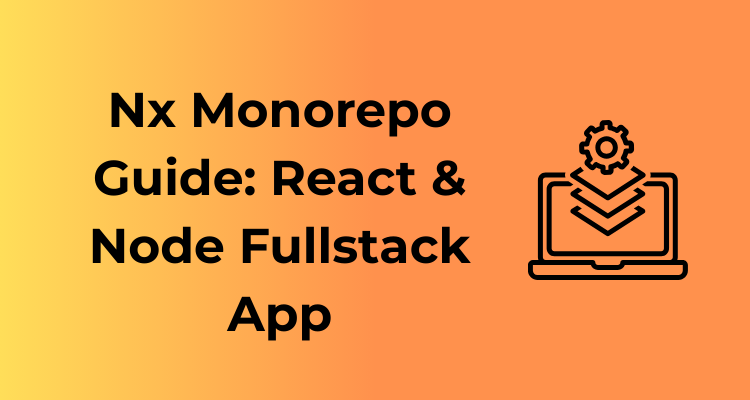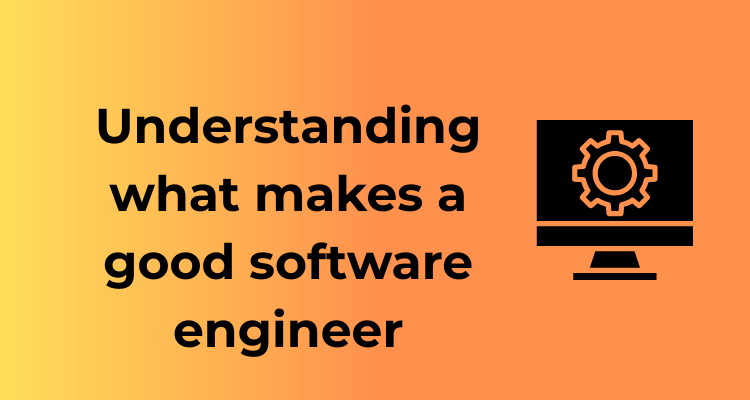Picture yourself as a developer juggling multiple codebases, feeling bogged down by the sheer complexity. This is where Nx steps in like a superhero. Nx, created by the smart folks at Nrwl, is tailored for developers managing monorepos—it’s like your personal toolkit, equipped to simplify, supercharge, and scale your multi-project workflows. Let’s dive into the core features of Nx, the bedrock of what makes it an outstanding choice for modern development!
Structuring a React and Node App within a Single Nx Workspace
Alright, so you’ve decided to take the plunge and build your full-stack application in Nx. Great choice! Now comes the fun part: setting up an Nx workspace that houses both your React frontend and your Node.js backend. And don’t worry—it’s not rocket science. Let’s dive into the details and whip up a clear path to get this structure in place!
Why One Workspace for Both Frontend and Backend?
First, let’s talk about the “why.” Managing your React app separately from your Node backend may sound like a simpler approach, but when scalability knocks at your door, you’ll thank yourself for adopting a unified workspace. It helps avoid scattered configurations, keeps all your code in sync, and streamlines tasks like code sharing between your frontend and backend. Nx makes it painless to build, maintain, and scale full-stack monorepos.
SQL MAX Date: Get Latest Row with Examples:Read more.
Step 1: Creating an Nx Workspace
Let’s get started by creating our Nx workspace! Open your favorite terminal and run:
npx create-nx-workspace@latestFollow the prompts to pick your workspace layout—whether you want it to prioritize applications or libraries. For a full-stack app, you’ll likely go with an Applications-first structure, which sets the stage for separate React and Node apps.
Step 2: Adding Your React App
With your workspace ready, adding your frontend is a breeze. Use the following command:
npx nx g @nrwl/react:application my-react-appHere, my-react-app is just a placeholder. Replace it with whatever name suits your project, like user-dashboard or admin-portal. This command sets up your React app with Nx best practices baked in. Plus, everything is pre-configured to work well with your backend.
Step 3: Adding Your Node.js Backend
Similarly, adding the backend is just one more command away:
npx nx g @nrwl/node:application my-node-appAgain, you can replace my-node-app with a project-specific name, like api or server. This will create a new Node.js app with all the tooling you need for production-ready development.
Step 4: Laying a Clear Project Directory
By now, your Nx workspace will look something like this:
project-root/
├── apps/
│ ├── my-react-app/
│ ├── my-node-app/
├── libs/
├── tools/
├── workspace.json
└── package.json
The apps/ folder contains your React and Node apps, while the libs/ folder is where you can consolidate shared code between both, such as utility functions or TypeScript interfaces.
Step 5: Ensuring Communication Between React and Node
Finally, your backend and frontend need to play nice together. You can configure your React app to make API requests to your Node backend by leveraging environment variables for flexibility (pro tip: try setting up a proxy in your development environment to streamline local testing).

Benefits of Nx’s File-Centric Approach
What makes Nx particularly awesome here is its focus on logical separation. Each of your apps is distinct, but Nx ensures harmony in dependencies and tooling. You won’t lose sleep over making adjustments or testing changes down the line.
- Single Point of Truth: You can tweak configs like ESLint, Prettier, or TypeScript settings in one place for the entire workspace.
- Shared Libraries: Nx makes it easy to create and reuse libraries, cutting down on duplicate code.
- Improved Scalability: Whether you add more features or apps, your monorepo structure will stay neat and manageable.
Efficient Dependency Management: Shared Code Across Frontend and Backend
Have you ever faced the frustration of maintaining duplicate code between your frontend and backend? Adding small edits, fixing bugs, or testing shared components across your application can feel like an endless game of “spot the difference.” This is where dependency management in Nx truly shines, especially when it comes to sharing code seamlessly across your application. Let’s dive in and explore how Nx makes this process not just efficient, but downright enjoyable!
Why Shared Code Matters
When you’re developing a fullstack application, it’s common for both the frontend and backend to rely on the same logic, models, or utility functions. Imagine defining a data validation schema for user input—would you want to rewrite (and maintain) that logic separately for both the backend and frontend? Of course not!
Shared code ensures consistency, reduces development time, and minimizes bugs, but managing it manually across different parts of the app can become a nightmare. Thankfully, Nx comes to the rescue here.
Nx Libraries to the Rescue
In your Nx workspace, you can create reusable libraries. These libraries are perfect for housing shared code that can be accessed by both the frontend and backend. Some key benefits include:
- Scalability: Your app might grow larger, but your workspace organization won’t need to feel chaotic. Libraries let you compartmentalize shared logic neatly.
- Consistency: Say goodbye to version mismatches or copy-paste coding errors.
- Speed: By reusing tested libraries, you’ll save time and energy for work that truly matters.
How to Create and Use Shared Code in Nx
Creating shared libraries in Nx is a breeze. Let’s break the process down:
- Generate a Library: Run the command
nx generate lib sharedto create a new library, perhaps called shared. - Add Your Shared Logic: Place reusable models, validators, or utilities in this library. For example, you could store user interfaces or helper functions here.
- Import as Needed: Both your frontend and backend apps can easily import this library. Nx will automatically track and manage these dependencies, so you don’t have to.
Ensuring Optimal Dependency Management
While shared libraries are powerful, here’s the fun part: Nx doesn’t just stop at creating and importing dependencies! It also helps manage and optimize them.
- Automatic Dependency Graph: Nx builds a visual representation of all connections between your apps and libraries. This makes it easy to see where your shared code is being used.
- Intelligent Caching: When you update your shared library, Nx knows which parts of the application are affected and rebuilds only what’s necessary. Talk about being smart!
- Linter Rules: You can define specific constraints for how your libraries can be used, ensuring a well-maintained codebase even in large teams.
Pro Tips for the Best Results
Want to maximize the effectiveness of shared code with Nx? Here are some expert-approved tips:
- Keep Libraries Purposeful: Design libraries with a clear purpose—don’t try to stuff everything in one place.
- Version Control Context: When working in a team, make use of Nx’s ability to scope library imports, preventing unintentional dependency creep.
- Test Thoroughly: Shared code touches multiple app layers. Testing the library in isolation can save you headaches down the road.
Simplifying Development Workflows with NRWL Extensions
Imagine a development workflow that feels as smooth as a morning coffee blend. If you’re working with Nx, then you’re in luck because the NRWL extensions are here to streamline your day-to-day tasks and save you countless hours! These extensions are like the secret sauce that takes your developer experience from good to amazing. Let’s dive into why they’re such a game-changer and how you can use them effectively in your Nx workspace.
What Are NRWL Extensions?
First things first, what exactly are NRWL extensions? Put simply, they’re a collection of tools, plugins, and utilities created by the team behind Nx (aka, NRWL) to make working in a monorepo ridiculously efficient. Whether you’re managing a fullstack JavaScript app, juggling dozens of modules, or coordinating multiple teams, these extensions aim to eliminate complexity. Think of them as a Swiss army knife designed for developers.
Key Benefits of NRWL Extensions
There are a ton of reasons why developers go wild over these extensions. Here are some of the main reasons they’re worth your attention:
- Automated Setup: NRWL extensions provide generators and schematics to scaffold projects or even entire applications in seconds. No need to tinker with configurations manually.
- Task Automation: With just one command, you can run linting, testing, building, and other tasks consistently across your projects.
- Plugin System: Extensions include plugins for various popular frameworks such as React, Angular, and NestJS. Tailor your workspace to match your stack of choice!
- Focus Mode: They help isolate and focus on specific parts of your monorepo by building only what’s been affected by recent changes. Talk about efficiency!
- Developer Experience: The tools are not only functional but also intuitive. Working with them feels less like a chore and more like creativity in motion.
A Closer Look at the Most Popular Extensions
Here’s a sample platter of some NRWL extensions you shouldn’t miss:
- Nx Console: A VS Code extension that puts forms and helpful GUIs for running Nx commands right into your editor. Hate memorizing CLI commands? Problem solved!
- React Plugin: Automatically generates components, libraries, and tests for your React projects. It’s like having a personal assistant to handle repetitive tasks.
- NestJS Plugin: Designed for backend enthusiasts, this plugin simplifies the creation of services, modules, and controllers in NestJS applications.
- Storybook Integration: If you’re into component-driven development, NRWL’s Storybook integration is a lifesaver for managing UI components and documenting them beautifully.
Tips for Getting the Most Out of NRWL Extensions
Here are some tips to help you fully leverage these tools:
- Explore the CLI: Nx extensions work seamlessly with the command-line interface. Take time to explore commands like
generate,affected, andgraph. - Customize Workflows: Use Nx’s extensibility features to tweak or add custom functionality to serve your team’s unique needs.
- Stay Updated: NRWL is constantly releasing updates. Keep your extensions up-to-date for the latest and greatest features.
- Lean on the Community: The Nx community on GitHub and forums is incredibly active. Don’t hesitate to ask questions or share your knowledge.
Automating Testing and Deployment the Nx Way
Hey, let’s talk about something that can sometimes feel overwhelming but becomes a delight with the right tools—continuous integration and deployment (CICD). If you’re using Nx for your fullstack app, you’re in luck because Nx makes automating tests and deployments a breeze. So, grab a coffee and let’s dig in!
Why CICD Matters
First off, why even bother with CICD? Well, imagine this: You’re merging code changes only to discover hours later that something broke because an overlooked test case failed. Or picture yourself deploying manually, sweating over whether you’ve missed a step. Sound familiar? CICD processes eliminate these headaches. They help you catch problems early and ensure that deployments are consistent and smooth as butter.
How Nx Fits into the CICD World
Using Nx, you’re already working in an organized, modular workspace. This sets the stage for automating your development lifecycle. Here’s the magic part: Nx integrates seamlessly with popular CI tools like GitHub Actions, CircleCI, Jenkins, or even your homegrown scripts. So, whether you’re hosting your app on Azure, AWS, Google Cloud, or any other platform, Nx has got your back.
Smart Task Orchestration
Nx’s standout feature for CICD is task orchestration. When paired with dependency graphs, Nx ensures that you only test or build what has actually been updated. That means speeding things up without redundant runs—love at first build, right?
Here’s an example:
Let’s say you just updated a shared library used by your frontend. Nx will understand which apps depend on that library and will automatically build and test only the sections of the project that this update impacts. No time wasted!
Setting Up CI with Nx
Setting up Nx in your existing CI pipeline is straightforward. Let’s break it down:
- Start with generating a
nx.jsonandworkspace.jsontailored for your project. - Leverage commands like
nx testandnx build. These commands run tests and create builds for only impacted parts of the code based on dependency analysis. - Use caching to save results from steps that don’t need re-running, saving you hours over time.
By now, your pipeline is already looking sharp and efficient!
Deployment, Done Right
With automated testing in place, the final boss is deployment! Nx works hand-in-hand with deployment scripts, ensuring that your app rockets to production without skipping a beat. Whether you’re working with Docker containers, serverless functions, or traditional servers, Nx plays nice with your deployment workflows.
Tools like Nx Cloud take deployment to the next level. With Nx Cloud, you can distribute builds and tasks across multiple processing instances, shaving precious minutes off your deployment times. Plus, it gives you incredible insight into what’s happening in your CICD pipeline with real-time dashboards.
Scaling Your Nx Monorepo: Tips to Expand Without the Stress
Successfully scaling a monorepo can feel like playing a giant game of Tetris—it’s all about fitting the pieces together in the most efficient and seamless way. With Nx, the process can be significantly less daunting (and much more rewarding) when you follow some tried-and-true best practices.
1. Embrace Modular Architecture
One golden rule when scaling an Nx monorepo is to think modular. What does this mean? Instead of bundling everything together into an unwieldy blob of code, break your application into smaller, reusable modules. These modules should have clearly defined responsibilities, making them easier to maintain and update.
With Nx, libraries within the workspace are your best friends. You can create feature-specific libraries, utility libraries, or even API-specific ones. This facilitates reusability and minimizes code duplication. Ask yourself, “Can I isolate this functionality into a standalone library?” If yes, you’re on the right scaling track!
2. Utilize Nx’s Affected Commands
When you’re dealing with a large, growing monorepo, running all tests or rebuilding every package every time you make a change becomes inefficient. This is where Nx’s “affected” commands shine. Commands like nx affected:build and nx affected:test allow you to focus only on the projects and dependencies impacted by your recent changes. This leads to faster CI pipelines and reduces wasted resources.
3. Standardize and Document Processes
As your Nx monorepo expands and more developers contribute, you’ll need consistency. Standardize how you name projects, structure directories, and define shared practices for adding dependencies or managing libraries. Not only will this help current team members, but it will make onboarding new developers a breeze.
Don’t overlook documentation! Tools like Storybook for frontend components or inline comments in your codebase are fantastic ways to keep everyone in the know. Create a team-wide policy that emphasizes clarity and helpful annotations in the code.
4. Optimize Your CI/CD Pipelines for Growth
Scaling your monorepo without thinking long-term about your Continuous Integration and Continuous Deployment pipelines is a recipe for frustration. Build pipelines that leverage Nx’s task orchestration capabilities. For example, use caching to reuse previous builds, ensure isolated builds for each app or library, and parallelize tasks wherever possible.
If you’re using cloud providers like AWS, Azure, or Google Cloud, tie them into your pipelines to manage deployment scaling seamlessly. Nx plays well with these, making the transition smoother.
5. Keep Dependencies Under Control
While it might be tempting to use every cool library you find, resist the urge to overload your monorepo with unnecessary dependencies. Not only can this cause performance issues, but it also complicates maintenance. Regularly audit your dependencies, remove unused packages, and ensure your shared libraries only expose essential functionality.
6. Stay Vigilant About Code Quality
As your repository scales, technical debt can sneak up on you. Use Nx’s integration with tools like ESLint, Prettier, and Jest to automate code quality checks and enforce rules consistently across your team. Never underestimate the impact of small, incremental improvements; they save you headaches down the line.
7. Plan for Team Collaboration
Large codebases often mean larger teams. Make use of tools like Nx’s distributed caching, detailed dependency graphs, and project generators to streamline collaboration. Encourage collaborative practices such as code reviews and pairing sessions to share ownership of the codebase.

Troubleshooting Common Pitfalls in Nx Monorepos
Working with Nx Monorepos can feel like driving a high-performance car—smooth, efficient, and powerful. But let’s face it, even the best cars can occasionally sputter. Luckily, there’s no need to panic. Here’s your roadmap to diagnosing and fixing common issues that trip up developers using Nx. Consider this your Monorepo first-aid kit!
1. Strange Build Errors Out of Nowhere
Let’s start with a classic: you’ve been cruising along just fine, but suddenly, your build throws an error on code that hasn’t been touched. Don’t worry; we’ve all been there.
- Check caching settings: Nx’s caching system is fantastic for speeding things up, but sometimes, stale cache can cause unexpected issues. You can easily clear the cache by running
npx nx resetand trying the build again. - Inspect dependencies: Outdated or mismatched dependency versions can wreak havoc. Be sure you’re syncing your workspace dependencies by reviewing your
package.jsonand runningnpm installoryarn install.
2. Dependency Injection Woes in Shared Libraries
Shared libraries are a gem in Nx—they allow you to reuse code like a pro. But it’s easy to hit a few snags.
- Watch the imports: Sometimes, libraries depend on parts of your app they shouldn’t (circular dependencies, anyone?). Let Nx’s built-in dependency graph come to the rescue! Run
npx nx dep-graphto visually inspect relationships and identify circular or unintended dependencies. - Enforce boundaries: Set up linting rules to keep the relationships in check. Nx’s workspace.json allows you to specify which projects a given library can depend on.
3. Frozen or Unresponsive Nx Commands
Is your terminal giving you a silent treatment while running an Nx script? It could have overworked itself, but you can fix that in a snap.
- Upgrade Nx: Often, sticking with an older version of Nx in a fast-evolving toolchain world can cause hiccups. Update to the latest version with
npm install nx@latest. - Parallelization troubles: Nx performs tasks concurrently by default to save time. If your machine feels overwhelmed, limit the number of parallel tasks by adding the
--maxParallel=1flag when running a command.
4. Deployment Testing Falling Apart
Your app passed local tests, but something’s off on deployment. Sound familiar?
- Environment mismatches: Double-check your environment configuration. Ensure your local development and deployment environments match as closely as possible by using environment files (e.g.,
.env). - Check path mappings: If you’re using TypeScript, incorrect path aliasing can wreak havoc during builds. Ensure your
tsconfig.jsonis correctly configured and extendable across shared libraries.
5. Misconfigured Build Targets
Ever wonder why your app builds perfectly on its own but fails when integrated into the monorepo workflow? Misconfigured build targets may sometimes cause trouble.
- Focus on project.json: For each app/project in your monorepo, revisit the
targetssection inside itsproject.json. Misaligned settings (e.g., incorrect executors) might creep in over time.









